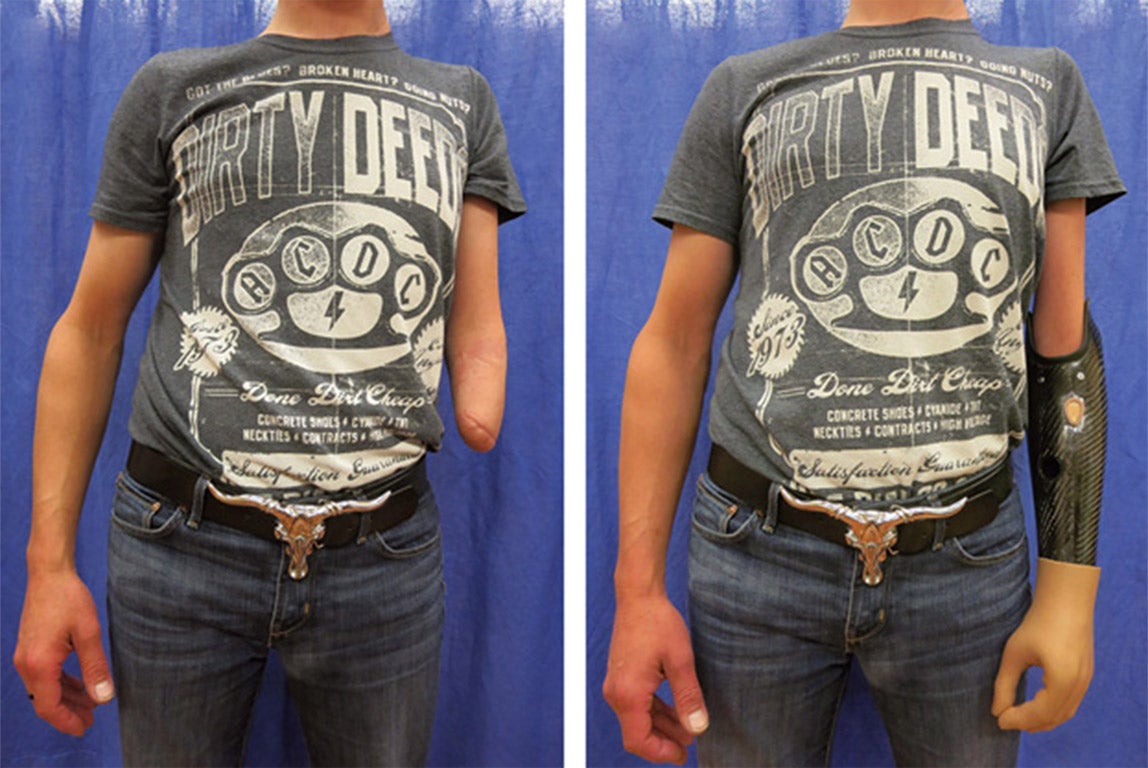Bionic hands: Disabled limbs replaced with mind-controlled prosthetics in medical first
Three Austrian patients who underwent the procedure are now able to pick up objects

Your support helps us to tell the story
From reproductive rights to climate change to Big Tech, The Independent is on the ground when the story is developing. Whether it's investigating the financials of Elon Musk's pro-Trump PAC or producing our latest documentary, 'The A Word', which shines a light on the American women fighting for reproductive rights, we know how important it is to parse out the facts from the messaging.
At such a critical moment in US history, we need reporters on the ground. Your donation allows us to keep sending journalists to speak to both sides of the story.
The Independent is trusted by Americans across the entire political spectrum. And unlike many other quality news outlets, we choose not to lock Americans out of our reporting and analysis with paywalls. We believe quality journalism should be available to everyone, paid for by those who can afford it.
Your support makes all the difference.Doctors have performed the world’s first “bionic hand reconstructions” – replacing a hand disabled by injury with a prosthetic that the patient can control with their mind.
The three Austrian patients who underwent the procedure are now able to pick up objects, pour water, use a key and do up buttons with their artificial limb.
Several patients around the world have now been fitted with bionic hands to replace lost or missing limbs, and a small number have been able to control them with signals from the brain.
But the new procedure differs as the patients involved had been left with a functionless hand because of damage to the nervous system, and had to consent to doctors amputating their damaged limb in order to replace it with a prosthetic.

Signals from the brain to the lower arm can, in rare cases, be cut off following a high-speed collision trauma injury, especially in motorcycle crashes or in rugby.
Once they had mastered this, patients were offered the choice of having their functionless hand amputated and replaced with a more sophisticated prosthetic.
Professor Oskar Aszmann, a pioneer in bionic surgery who led the latest procedures, said in the three patients who underwent the full procedure, the results were an improvement on existing surgical techniques.
“The scientific advance here was that we were able to create and extract new neural signals via nerve transfers amplified by muscle transplantation,” he said. “These signals were then translated into solid mechatronic hand function.”
The outcome of the procedures, carried out at Vienna’s Christian Doppler Laboratory for Restoration of Extremity Function, and assisted by engineers from the University Medical Centre Göttingen, are published in The Lancet today. Dr Stefan Salminger, who also worked on the new technique, said the prosthesis was a “helping hand” that enabled patients to perform daily tasks, with both hands much better than before.
“It’s a valid treatment,” he said. “But only if the patient wants it from a psychological point of view. We can’t force anyone to do this – it’s losing a hand. Although functionless, it’s your hand. The biggest issue for patients will be whether they are ready to go through this process.”
Last year a Danish patient became the first to receive a bionic hand that could feel texture and the shape of objects.
Join our commenting forum
Join thought-provoking conversations, follow other Independent readers and see their replies
Comments